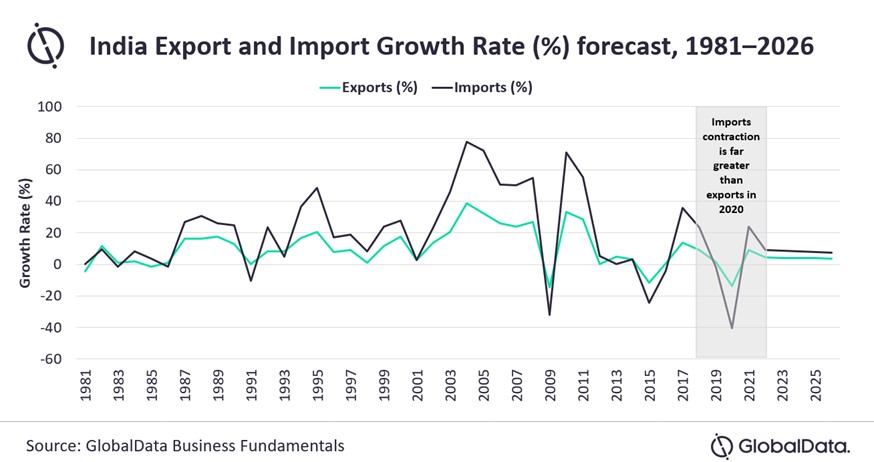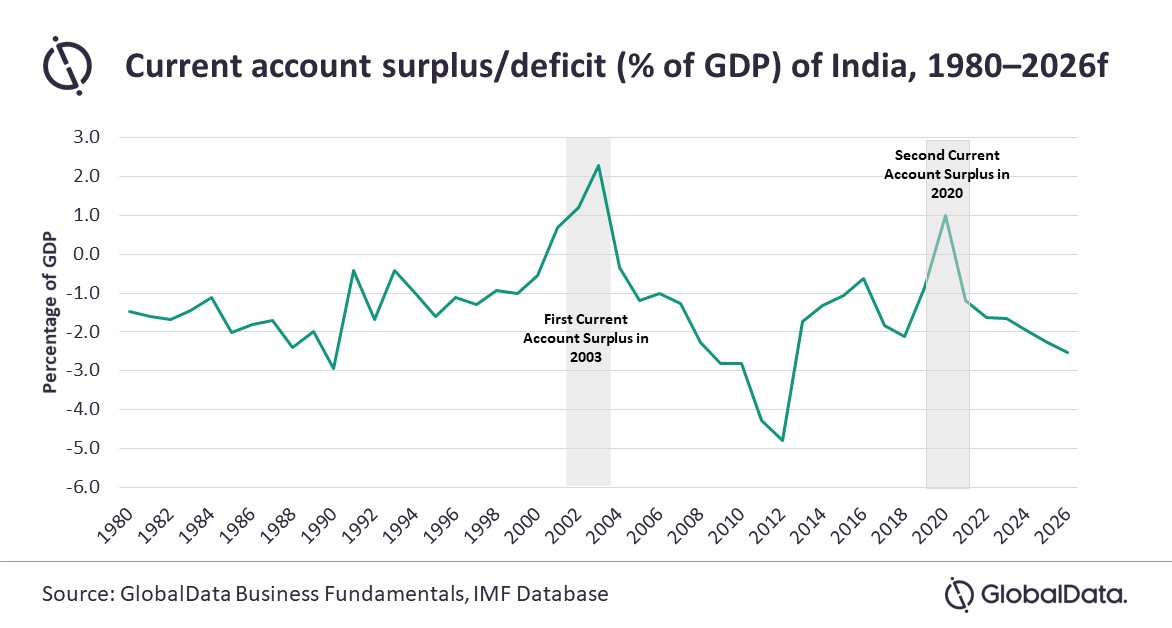| India’s first current account surplus since 2003 may not sustain as trade deficit set to widen, says GlobalData. India recorded an annual current account surplus for the first time in 17 years in 2020 due to lower trade deficit amid depressed import demand with closure of economic activities due to the COVID-19 induced nationwide restrictions. However, the current account surplus may not sustain as trade deficit is forecasted to widen from US$23.3bn in 2020 to US$53.9bn in 2021 with the re-opening initiatives, says GlobalData, a leading data and analytics company. The current account balance showcases the gap between the country’s overall foreign receipts and payments and highlights the nation’s external sector’s robustness. India’s current account which recorded an average annual deficit of 1.9% of GDP during 2004-2019 turned into a surplus of 1.0% of GDP in 2020. The main driver of India’s current account surplus was lower imports due to subdued domestic demand and lower prices of oil, which narrowed down the trade deficit by US$102.8bn in 2020. Thus, while exports weakened by 13.8%, imports contracted by a massive 26.6% in 2020. Shruti Upadhyay, Economic Research Analyst at GlobalData, says: “Most Indian states are embarking on reopening initiatives and with the resumption of economic activities domestic demand is expected to rise, which is anticipated to drive the growth of exports and imports. “GlobalData forecasts the imports and exports to grow at an average annual growth of 6.4% and 5.2%, respectively, during 2021–25. Consequently, India is expected to record a current account deficit of 1.74% of GDP on an average during 2021–25, as per the IMF estimates.”  India is the third largest consumer of the crude oil in the world, with an import dependency of almost 85%, playing a vital role in total import growth of the country. India is the third largest consumer of the crude oil in the world, with an import dependency of almost 85%, playing a vital role in total import growth of the country. The reduction in imports in 2020 were majorly due to decline in petroleum, oil, and lubricants (POL) imports by 36.9% during 2020-21 (Y-o-Y), a decline from US$130.6bn in 2019–20 to US$82.4bn in 2020–21, according to RBI data. Such steep decline in POL and capital goods can be traced back to lockdown induced slump in domestic demand and industrial production, which is however forecasted to revive in 2021 with reopening measures undertaken by the government.  Ms Upadhyay concludes: “The tailwinds from global recovery and fast vaccination pace is expected to push up imports as compared to exports and may lead to return of current account deficit in 2021. Ms Upadhyay concludes: “The tailwinds from global recovery and fast vaccination pace is expected to push up imports as compared to exports and may lead to return of current account deficit in 2021. “Although the current account surplus is a positive outcome, it is no reason of joy with lower imports as the driver of surplus and not higher exports. This does not reflect the competitiveness of economy but provides temporary relief to the government as the additional borrowing from external financing to fulfil the current account deficit is reduced.” |



